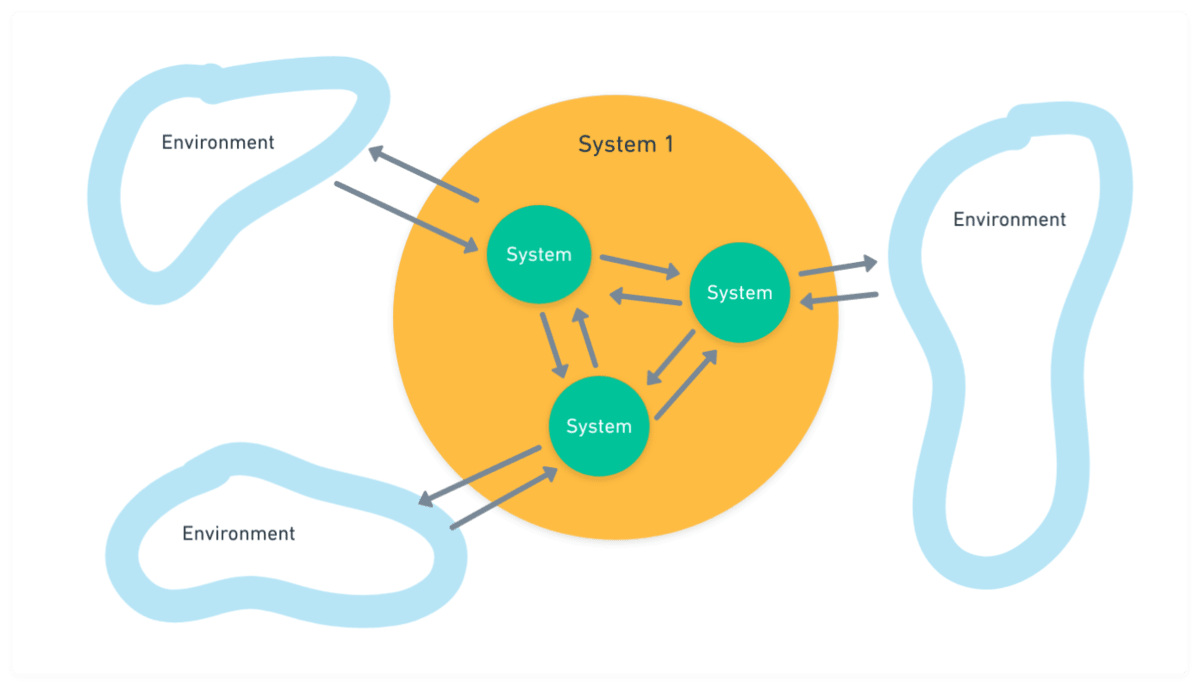TB871: Assigning a purpose & defining primary operations in my system of interest (System 1)
Note: this is a post reflecting on one of the modules of my MSc in Systems Thinking in Practice. You can see all of the related posts in this category.
My next assignment for this module, Tutor-Marked Assessment 02 (TMA02), involves applying the Viable System Model (VSM) to a system of interest within the overall area of practice I have chosen. I’m going with A system to support lifelong learning.

Activity 3.19 (The Open University, 2020) asks us to think about System 1, which as I explained in a previous post, is one of five systems which comprise the VSM. It’s primarily about “understanding the business we are in” and constitutes the primary activities of the organisation:
System 1: Primary Operations — The core activities or units within an organisation that perform the essential work and produce the primary value for the external environment. Think of these as the operational units directly involved in delivering the organisation’s products or services.
Assigned purpose
The primary purpose I am assigning to the system to support lifelong learning is to provide continuous educational opportunities, enabling individuals to acquire new skills, knowledge, and competencies throughout their lives.
The system aims to enhance personal development, employability, and adaptability as conditions change in society and the wider economy. It aims to create an inclusive environment where all community members, regardless of age, background, or socioeconomic status, can access education and training resources.
Structure
This system requires several layers in order to function well:
- Strategy — policies, planning, regulation, funding, as well as collaboration with government, educational institutions, private sector partners, and community organisation
- Operations — schools, colleges, universities, libraries, vocational training centres, creating curricula, training materials, and educational resources
- Support — digital platforms, e-learning tools, and IT support, as well as guidance (academic/career/vocational), financial assistance, and mentorship
- Community — outreach/recruitment, marketing, feedback mechanisms to ensure relevance
Primary systems
- Educational delivery — provides high-quality educational programs and courses tailored to the needs of lifelong learners.
- Technological support — ensures the technological infrastructure to support e-learning and digital literacy.
- Learner support — offer comprehensive assistance to enhance the learning experience and outcomes for learners.
- Community engagement — promotes lifelong learning within the community and establish/sustain partnerships with local organisations and businesses.
- Evaluation & feedback — monitors and evaluates the effectiveness of lifelong learning initiatives and incorporates feedback for continuous improvement.
Having worked in many different sectors of education and learning, we might also want to add:
- Administrative support — manages the administrative and logistical aspects of delivering lifelong learning programmes.
- Marketing & recruitment — attracts learners to the lifelong learning programs to ensure sustainable enrolment
- Partnerships & collaboration — establishes and maintains partnerships with external organisations to enhance the learning experience.
These primary operations, or ‘sub-systems’ of System 1 are related to one another and particular aspects of the environment via feedback loops (as shown in the diagram).
References
- The Open University (2020) ‘3.3.3 Applying System 1’, TB871 Block 3 Tools stream [Online]. Available at https://learn2.open.ac.uk/mod/oucontent/view.php?id=2261487§ion=4.3 (Accessed 26 June 2024).

